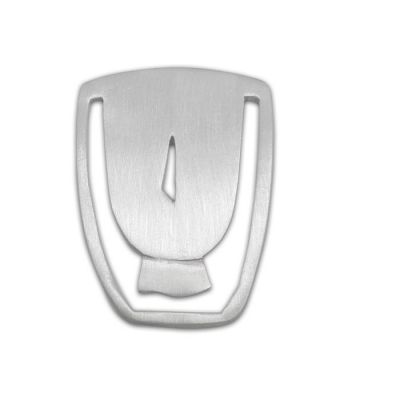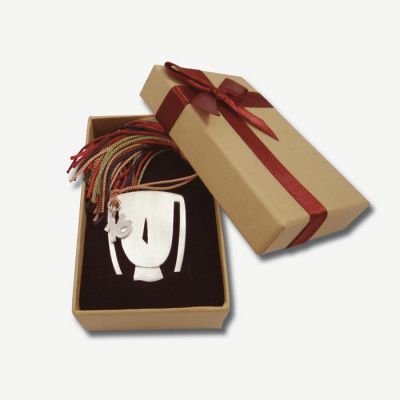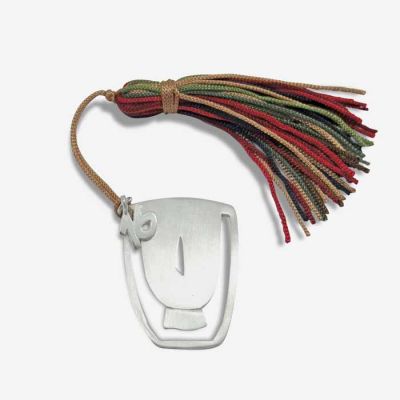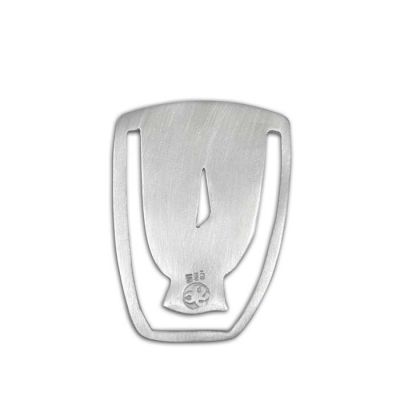Our proposal for the charm for the new year 2018 is inspired by the minimal shape of the Head of a Cycladic figurine, which can also be used as unique handmade bookmark. The big frohead tilted slightly rearwards leads to the nose, an embossed point in the center of the face which is the only projection. The shape of the head and features show that it probably comes from a Cycladic marble figurine that of the folded hands type,dating between 2800 - 2100 BC. It comes with a tassel and the number of the year "18" in solid silver and in a gift packaging.
Solid silver 925° handmade copy
Dimensions: 3 cm x 3,5cm x 1mm
You can also, see our collection of charms.
Order it now for you or your loved ones!
All prices include VAT.
The marble figures usually called "idols" or "figurines are the best-known shapes of the Cycladic Art that flourished during the early Bronze Age in the Aegean. The “Cycladic figurines” evolved in the Cyclades, in the period between 3200 and 2200 BC and continued to be produced until 2000 BC.
The marble figurines vary in sizes and style. The most common are the figures with the folded arms, known as the "canonical" type figurines, which usually represent nude female figures with the arms folded above the abdomen.
The figurines have lyre-shaped heads with wide foreheads, angular shoulders and incisions indicating the arms, the pubic triangle and the joints. They often seem to be lying down and to be in the state of pregnancy.
The nose is the only feature that is strongly indicated at the heads of the "folded-arm" figurines, while other parts, like the ears are often engraved or embossed.
However, pigments were used to denote facial features, such as the eyes and the hair, while it is speculated that some idols might have been decorated with silver jewelry.
The meaning and function of the figurines is most likely connected to the religious beliefs of the prehistoric Aegean civilizations. It is assumed that they are representative of the "Mother goddess", a symbol of fertility and rebirth. They have been variously interpreted as idols of the gods, images of death, children's dolls, and other things.
The charms, even in the ancient times, were used as symbols of good luck and protection and that's why today, we tend to identify them with the coming of the new year and the hopes to bring fortune to our lives. The charm is a symbolic gesture that shows our appreciation to whoever is given as a gift.
No posts found













